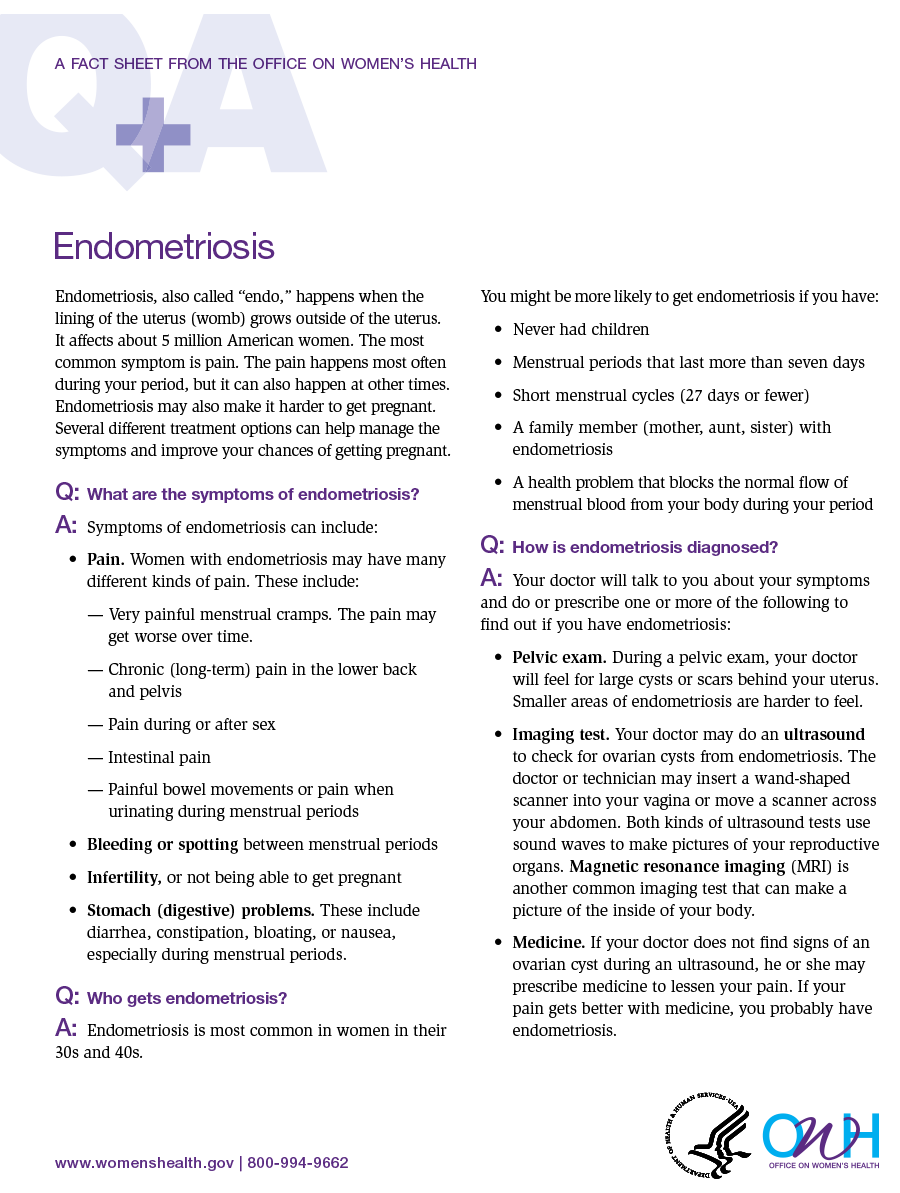Print and download 1-page patient fact sheets in English or Spanish on topics such as endometriosis, hysterectomy, menopause, the menstrual cycle, polycystic ovary syndrome (PCOS), and vaginal yeast infections.
Fact sheets
Information on reproductive health problems for women.
- Endometriosis fact sheet (PDF, 169 KB)
- Hoja de datos sobre endometriosis (PDF, 169 KB)
- Hysterectomy fact sheet (PDF, 153 KB)
- Hoja de datos sobre histerectomías (PDF, 153 KB)
- Menopause fact sheet (PDF, 104 KB)
- Hoja de datos sobre menopausia y sus tratamientos (PDF, 104 KB)
- Menstrual cycle fact sheet (PDF, 110 KB)
- Hoja de datos sobre menstruación y el ciclo menstrual (PDF, 110 KB)
- Ovarian cysts fact sheet (PDF, 162 KB)
- Hoja de datos sobre quistes ováricos (PDF, 162 KB)
- Pelvic organ prolapse fact sheet (PDF, 101 KB)
- Hoja de datos sobre prolapso del órgano pélvico (PDF, 101 KB)
- Polycystic ovary syndrome (PCOS) fact sheet (PDF, 126 KB)
- Vaginal yeast infection fact sheet (PDF, 169 KB)
- Hoja de datos sobre candidiasis vaginal (PDF, 169 KB)


